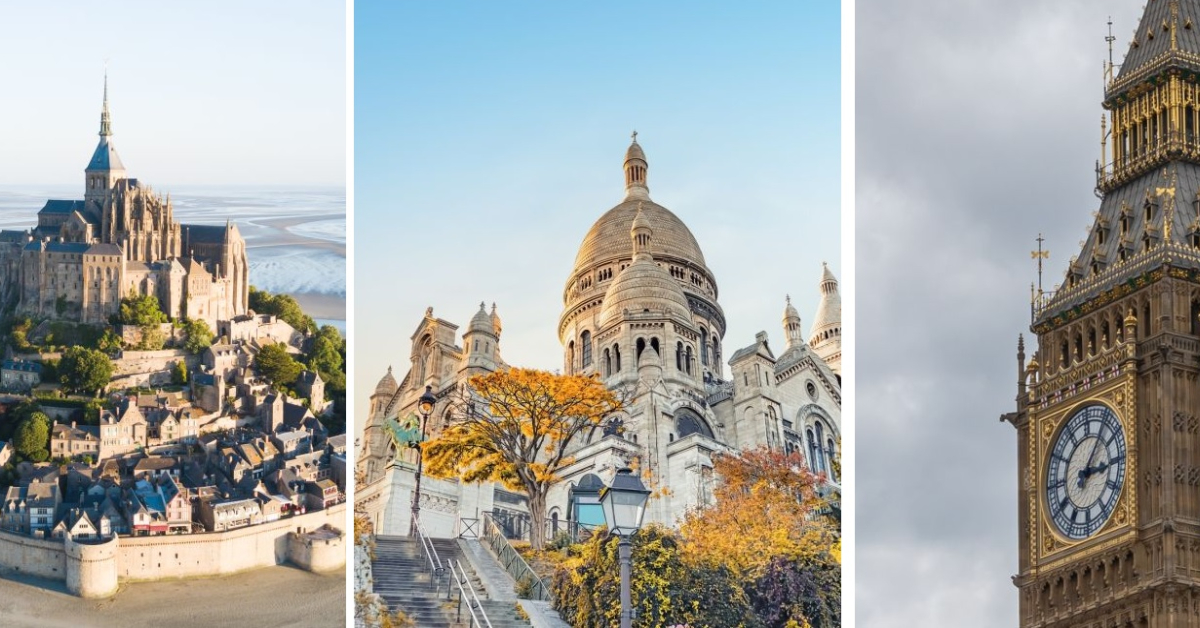
Architecture has long been a reflection of a civilization’s culture, innovation, and ambition. Throughout history, numerous buildings have left an indelible mark on the landscape of our world, becoming iconic symbols of human achievement and creativity. From ancient wonders to modern marvels, these structures continue to captivate and inspire people from all corners of the globe.
In this blog post, we will take a journey to explore some of the most famous buildings worldwide, celebrating the masterpieces of architecture that have stood the test of time.
The Great Pyramids of Giza, Egypt
We begin our journey with one of the most iconic structures in human history, the Great Pyramids of Giza. Built over 4,500 years ago during the reign of Pharaohs Khufu, Khafre, and Menkaure, these colossal pyramids stand as a testament to the architectural prowess of ancient Egypt. The Great Pyramid of Giza, also known as the Pyramid of Khufu, is the largest of the three, standing approximately 146 meters tall.
These pyramids were constructed as tombs for the pharaohs and were built with millions of limestone and granite blocks, each weighing several tons. The precision with which these immense structures were built continues to baffle engineers and historians alike, making them a timeless marvel of human ingenuity.
The Colosseum, Italy
From ancient Egypt, we travel to Rome, Italy, to witness the grandeur of the Colosseum. Completed in 80 AD, this elliptical amphitheater was capable of seating up to 80,000 spectators, making it the largest amphitheater ever built. The Colosseum was used for gladiatorial contests and public spectacles such as animal hunts, mock sea battles, and dramas based on classical mythology.
Despite being partially destroyed by earthquakes and stone robbers over the centuries, the Colosseum remains an iconic symbol of the Roman Empire and a testament to the architectural and engineering skills of the ancient Romans.
The Taj Mahal, India
Moving to the Indian subcontinent, we encounter the breathtaking beauty of the Taj Mahal. Commissioned in 1632 by the Mughal emperor Shah Jahan to house the tomb of his favorite wife, Mumtaz Mahal, the Taj Mahal is considered the finest example of Mughal architecture. Built over 22 years by a workforce of 20,000 artisans, the Taj Mahal is renowned for its symmetrical design, intricate marble inlays, and exquisite craftsmanship.
The mausoleum is surrounded by a vast Persian-style garden, further adding to its ethereal beauty. Today, the Taj Mahal stands as a UNESCO World Heritage Site and is considered one of the most iconic symbols of love and devotion in the world.
The Eiffel Tower, France
No exploration of famous buildings would be complete without mentioning the Eiffel Tower. Located in Paris, France, this iconic iron lattice tower was constructed as the centerpiece of the 1889 World’s Fair. Designed by Gustave Eiffel, the tower stands 324 meters tall and held the title of the tallest man-made structure in the world until the completion of the Chrysler Building in New York City in 1930.
Despite initial criticism from some of France’s leading artists and intellectuals, the Eiffel Tower has become one of the most recognizable structures in the world and a global cultural icon of France.
The Sydney Opera House, Australia
Traveling to the southern hemisphere, we arrive in Sydney, Australia, to marvel at the Sydney Opera House. Designed by Danish architect Jørn Utzon, this architectural masterpiece is renowned for its unique and futuristic design, resembling a series of billowing sails or seashells.
Constructed on Bennelong Point and completed in 1973, the Sydney Opera House has become one of the most famous performing arts venues in the world. It hosts over 1,500 performances each year, attracting millions of visitors who come to admire its architectural brilliance and enjoy world-class performances.
The Burj Khalifa, United Arab Emirates
Our journey now takes us to the desert city of Dubai, United Arab Emirates, where we find the Burj Khalifa, the tallest building in the world. Standing at a staggering 828 meters, the Burj Khalifa is a marvel of modern engineering and design.
Designed by the Chicago-based architectural firm of Skidmore, Owings & Merrill, the skyscraper features a distinctive Y-shaped floor plan and a sleek, tapering silhouette. Completed in 2010, the Burj Khalifa has redefined what is possible in architectural and engineering design, symbolizing Dubai’s ambition and vision for the future.
The Sagrada Família, Spain
Our final destination is Barcelona, Spain, where we encounter the Sagrada Família, the masterpiece of renowned architect Antoni Gaudí. Construction of this breathtaking basilica began in 1882 and is still ongoing, with an anticipated completion date in 2026, marking the centenary of Gaudí’s death.
The Sagrada Família is a UNESCO World Heritage Site and is renowned for its intricate façades, towering spires, and organic design inspired by nature. Gaudí devoted the last 15 years of his life entirely to the project, and today, it stands as one of the most visited monuments in Spain, attracting millions of visitors each year.
In Conclusion
From the timeless wonders of antiquity to the cutting-edge marvels of contemporary architecture, these renowned buildings serve as monuments to human creativity, resourcefulness, and aspiration. Each edifice narrates a tale, mirroring the societal customs, historical narratives, and technological breakthroughs of its era.
Whether it’s the enduring elegance of the Taj Mahal or the forward-looking design of the Sydney Opera House, these architectural masterpieces consistently evoke wonder and reverence across diverse audiences. As we persist in pushing the limits of architectural ingenuity, it prompts speculation about the forthcoming structures that will shape the future generations’ landscapes.
And amidst this narrative, the role of aluminum supplies in facilitating modern architectural feats cannot be overlooked, underscoring the indispensable contribution of materials to the evolution of architectural marvels.


